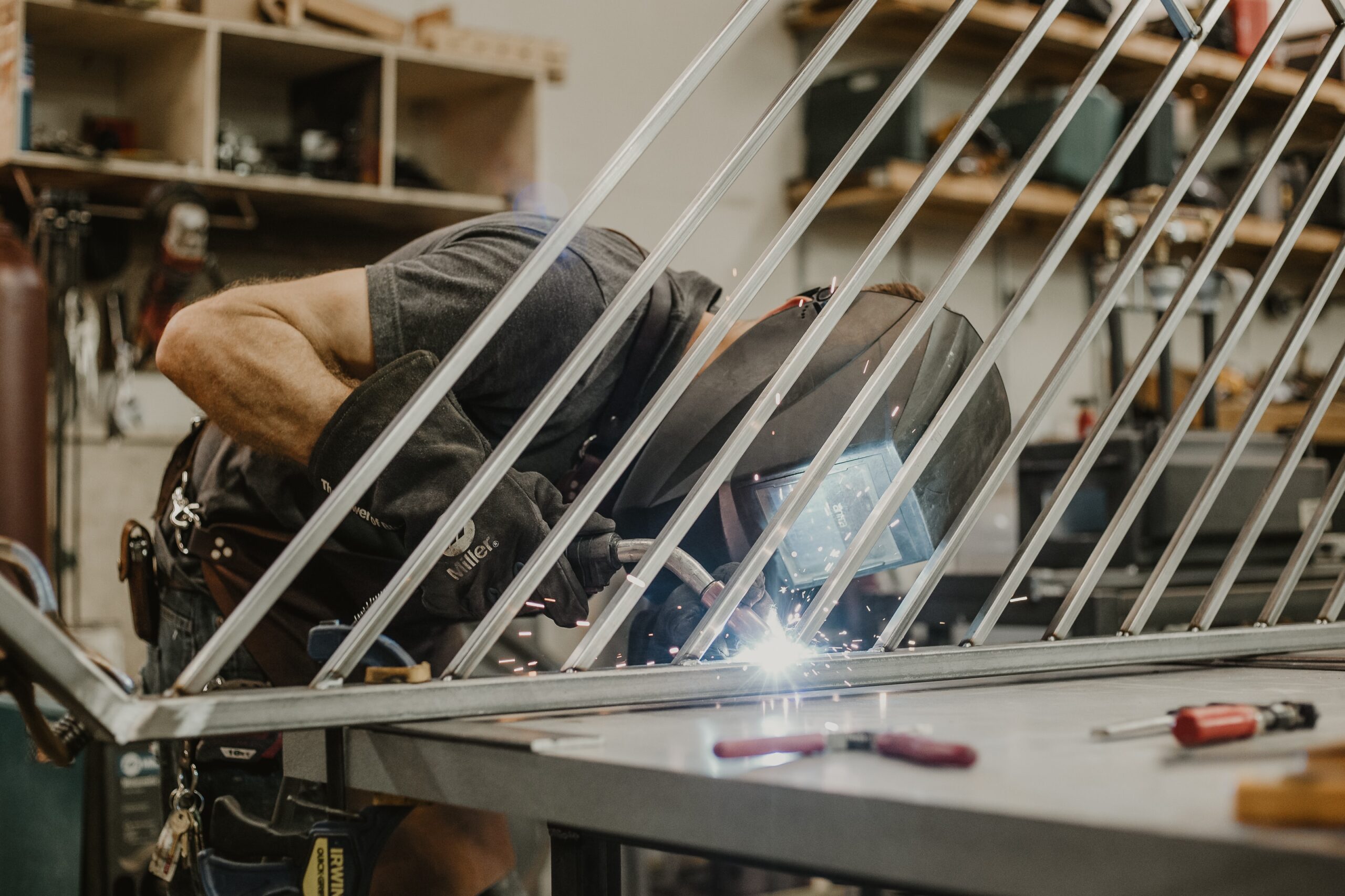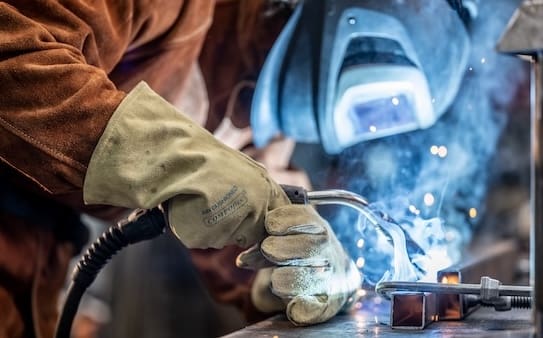Usual Welding Repair Service Issues and Exactly How to Address Them Effectively
Welding repair services typically run into a variety of issues that can threaten the honesty of the final item. Usual issues include poor penetration, porosity, and imbalance, amongst others. Each flaw provides special obstacles that call for certain methods for resolution. Recognizing these problems is crucial for welders intending to improve their abilities and results. This conversation will explore these usual welding fixing concerns and reliable techniques to address them.
Insufficient Penetration
Poor infiltration occurs when the weld steel stops working to fully fuse with the base product, leading to weak joints and potential architectural failings. This problem frequently comes from inadequate heat input, wrong electrode angle, or inappropriate welding rate. Welders may come across insufficient infiltration due to a mistake of the needed parameters for a specific product thickness or type. Additionally, contamination on the base product's surface area can impede reliable bonding, worsening the problem. To resolve insufficient infiltration, welders must assure suitable setups on their tools and preserve a tidy work surface area. Normal assessment of welds is recommended to identify any kind of shortages early, allowing for timely corrections and the prevention of endangered structural honesty in welded settings up.
Porosity
Porosity is a common problem in bonded joints that shows up as tiny gas bubbles trapped within the weld steel. This problem can jeopardize the stability of the weld, leading to decreased strength and potential failing under tension. Montana Mobile Welding and Repair Belgrade. Porosity commonly arises from contamination, moisture, or improper welding methods, which allow gases to leave into the liquified weld pool. To resolve porosity, welders need to ensure correct surface area prep work, preserve a clean workplace, and make use of ideal welding parameters. In addition, picking the appropriate filler product and protecting gas can minimize gas entrapment. Normal evaluation and testing of welds can help identify porosity early, assuring timely restorative activities are taken, consequently preserving the high quality and dependability of the bonded structure
Imbalance
Misalignment in welding can occur from different aspects, including inappropriate setup and thermal growth. Comprehending the source is important for effective resolution. A number of correction techniques are readily available to straighten elements and assure structural honesty.
Reasons of Imbalance
Welding misalignment often comes from a selection of underlying issues that can jeopardize structural integrity. One key reason is incorrect fit-up of elements before welding, which can lead to gaps and unequal surfaces. Variations in thermal development throughout the welding procedure can likewise result in distortion, particularly if the materials being signed up with have various coefficients of growth. Additionally, insufficient securing and fixturing may fall short to hold components firmly in position, resulting in activity during welding. Inadequately kept tools, including welding makers and tools, may present incongruities in the weld bead, further contributing to imbalance. Finally, operator error, stemming from inadequate training or experience, can also play a considerable duty in developing misaligned welds.
Adjustment Techniques Offered
Resolving imbalance successfully calls for a mix of rehabilitative techniques tailored to the specific concerns handy. One common method is making use of jigs or fixtures to hold components in the correct setting during welding, ensuring regular placement. Additionally, preheating the products can help in reducing distortion and boost fit-up. For substantial imbalance, mechanical realignment techniques, such as utilizing hydraulic jacks or clamps, can be employed to fix the setting before welding. Post-weld warm treatment might likewise be essential to relieve anxieties brought on by misalignment. Ultimately, careful assessment and modification throughout the configuration phase can stop misalignment concerns from becoming substantial troubles, promoting a smoother welding procedure and improving total architectural integrity.
Distortion
Distortion is a typical obstacle in welding that can occur from numerous variables, consisting of uneven heating & cooling. Recognizing the causes of distortion is necessary for implementing efficient prevention methods. Resolving this concern not just enhances structural stability however likewise boosts the general top quality of the weld.
Reasons for Distortion
When based on the intense warmth of welding, products often go through modifications that can cause distortion. This sensation mostly develops from thermal growth and tightening throughout the welding procedure. As the weld location warms up, the product broadens; upon air conditioning, it acquires, which can produce internal anxieties. On top of that, uneven heating across a work surface can aggravate these stress and anxieties, resulting in warping or flexing. The sort of product additionally plays a substantial function; steels with differing thermal conductivity and coefficients of development might react in different ways, bring about unforeseeable distortions. Furthermore, inadequate joint style and inadequate fixturing can add to imbalance throughout welding, boosting the probability of distortion. Comprehending these reasons is vital for effective welding fixing and prevention strategies.
Avoidance Techniques
Reliable avoidance methods for distortion during welding emphasis on managing warmth input and ensuring proper joint style. Maintaining a regular heat input aids to lessen thermal expansion and contraction, which can result in distortion. Utilizing strategies such as preheating the work surface can also minimize the temperature level gradient, advertising uniform heating. In addition, choosing suitable joint layouts, such as T-joints or lap joints, can enhance stability and lower anxiety concentrations. Applying appropriate fixturing to safeguard the workpieces in area even more help in preserving alignment during the welding procedure. Staggered welding series can disperse heat a lot more equally, avoiding localized distortion. By using these useful reference techniques, welders can greatly reduce the likelihood of distortion and enhance the total high quality of their welds.
Fracturing
Breaking is a typical problem experienced in welding repair services, frequently arising from numerous factors such as incorrect air conditioning prices, material choice, or insufficient joint preparation. The occurrence of cracks can considerably endanger the honesty of the weld, bring about potential failures throughout procedure. To resolve this problem, welders should initially examine the origin, making sure that materials work and suitably chosen for the specific application. Furthermore, managing the air conditioning price throughout visit homepage the welding process is important; fast cooling can induce tension and cause cracking. Proper joint layout and preparation likewise add to decreasing the risk. Executing these techniques can boost weld quality and longevity, eventually minimizing the chance of fracturing in completed weldments.

Insufficient Blend
A considerable issue in welding repairs is incomplete combination, which occurs when the weld metal does not adequately bond with the base product or previous weld passes - Montana Mobile Welding and Repair Belgrade. This issue can lead to weaknesses in the joint, possibly compromising the integrity of the welded structure. Variables contributing to incomplete fusion include inadequate warm input, improper welding strategy, and contamination of the surfaces being joined. To resolve this concern efficiently, welders must ensure correct pre-weld cleansing and surface area preparation, along with readjust their welding criteria to achieve sufficient penetration and combination. Normal examination throughout the welding process can additionally aid recognize insufficient blend early, enabling timely corrective procedures to boost the total top quality of the weld
Overheating
While welding repair work can enhance structural integrity, overheating offers a considerable difficulty that can cause product destruction. Excessive heat during welding can alter the mechanical homes of metals, leading to lowered strength, raised brittleness, and bending. This sensation is specifically crucial in high-stress applications where structural reliability is extremely important. Recognizing getting too hot can include visual assessments for staining or distortion, as well as keeping an eye on temperature throughout the welding procedure. To alleviate the threats linked with overheating, welders must utilize suitable methods, such as managing heat input, readjusting travel rate, and making use of appropriate filler materials. In addition, implementing pre- and post-weld warmth therapies can help bring back material residential properties and enhance the total top quality of the repair, making sure long-lasting efficiency and security.
Frequently Asked Inquiries
What Are the Typical Indicators of a Welding Defect?

Just How Can I Evaluate My Welds for Quality?
To evaluate welds for high quality, one can use aesthetic examinations, ultrasonic screening, and radiographic methods. Each technique guarantees architectural honesty, recognizes problems, and validates adherence to specified requirements, ultimately enhancing the integrity of the bonded joints.
What Security Safety Measures Should I Take While Welding?
When welding, one must focus on security by wearing appropriate personal protective equipment, guaranteeing proper air flow, safeguarding flammable products away, keeping a clean workspace, and knowing surroundings to avoid injuries and crashes.
Can I Fix a Weld Without Redesigning the Entire Joint?
Repairing a weld without redoing the whole joint article is possible, relying on the damage (Montana Mobile Welding and Repair). Methods such as grinding, adding filler product, or using a welding process can effectively resolve particular flaws while maintaining the surrounding framework
What Equipment Are Necessary for Reliable Welding Fixes?
Vital devices for efficient welding repairs consist of a welding equipment, cable brush, mill, protective equipment, clamps, and filler materials. Each tool plays an essential role in ensuring high quality and safety and security during the fixing process. Porosity generally emerges from contamination, dampness, or inappropriate welding techniques, which enable gases to escape into the liquified weld swimming pool. Poorly kept tools, consisting of welding machines and tools, may present inconsistencies in the weld bead, additional contributing to imbalance. When subjected to the extreme heat of welding, products commonly go through changes that can lead to distortion. Breaking is a typical problem run into in welding fixings, typically resulting from different variables such as incorrect air conditioning prices, product choice, or poor joint prep work. A substantial concern in welding repairs is incomplete fusion, which occurs when the weld metal does not properly bond with the base product or previous weld passes.